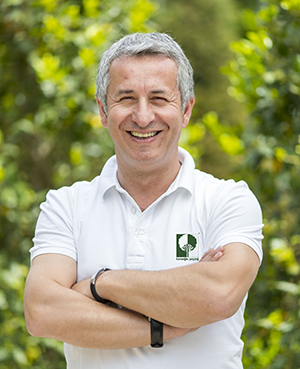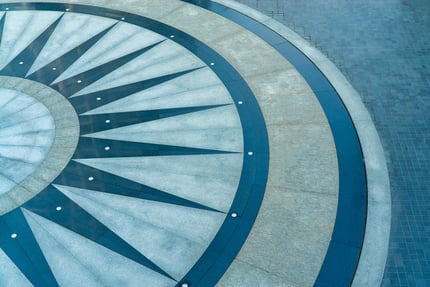When it comes to landscaping, soothing shades of green come to mind. The vegetative landscape, known as softscape, which includes trees, shrubs, flowers, grass and other light materials, actually has a lingering companion: the structural landscape, or, hardscape. Structural landscape design, of great importance but often overshadowed by vegetation, includes the use of stone flooring, water features and wooden applications such as pergolas. These add shape, functionality and depth to landscape design.
What is Hardscaping?
Hardscaping is the use of hard landscape materials such as wood, stone or concrete to shape, support and build your landscape.
Landscape design includes the types of rigid materials and structures needed to create and maintain the look and environment that you want. In hardscape design, it contains many hard elements such as natural stone, concrete, bricks, fountains, pergolas, awnings and ponds. At this stage of the landscaping project, the hardscaping features are decided and the materials that will be used are chosen.
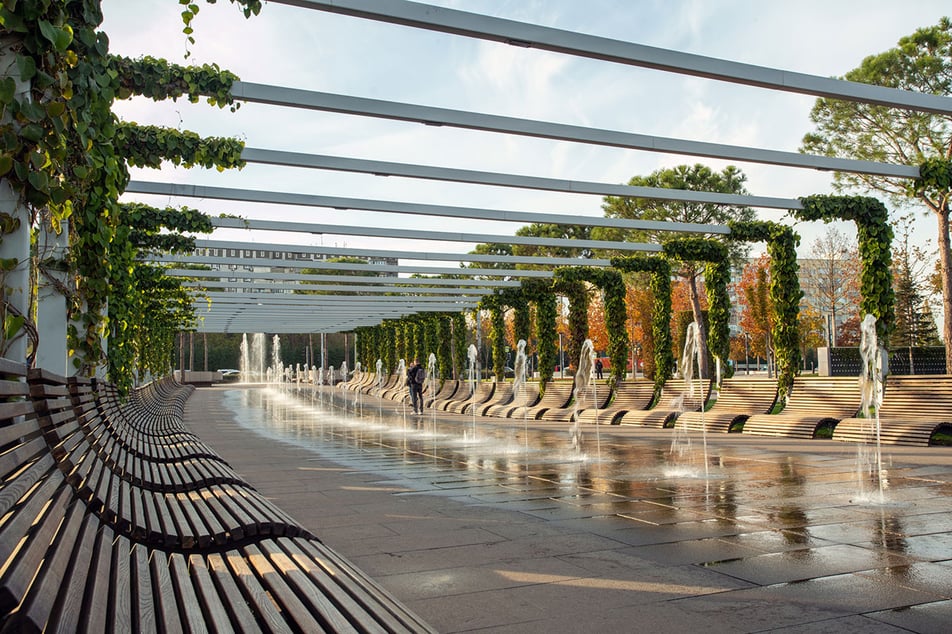
While softscaping brings spirit and character to exterior areas, the hardscaping gives shape and depth to the area in which it will be applied. The key to a successful landscape design is to create a unified view of softscape and hardscape. Moreover, the biggest plus of hardscaping is that it allows more space for creative landscape design. For this reason, structural landscape development should be prepared with hard work and intense attention.
Why should you invest in hardscaping?
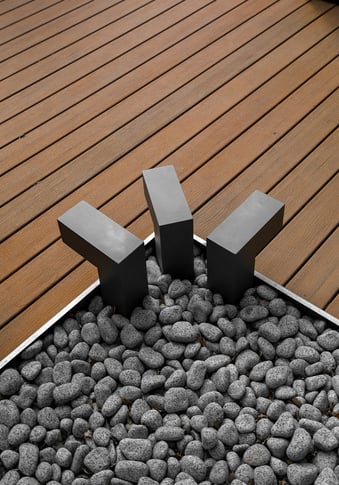 We can explain the answer to this question for you in eight items;
We can explain the answer to this question for you in eight items;
2. You can increase the value of your property.
3. You can fill in the blanks.
4. You can beautify your landscape and add dimensions to the space.
5. You can expand the available space.
6. You can improve climate problems and reduce erosion.
7. You can create shaded areas and provide privacy.
8. You can make your structure more sustainable.
Basic Elements of Hardscaping
Hardscape elements allow the creation of structures that support the landscape. Terms that fall within the definition of “building” such as retaining walls, terraces, courtyards and irrigation are the basic elements that make up hardscaping. These elements also allow for the use of stone, water and wood in landscape design. We have gathered the three most used basic elements in hardscape design under three headings in general terms. We have gathered these three most used materials in structural landscape design and the advantages they will bring to your building under three headings.
Water Features

Adding water to your landscape can bring serenity, beautiful sounds, and more to your hardscape. When water features are done well in a landscape application project, it draws one's experience into nature and provides an integrity that nothing else can provide. Waterfalls, fountains and ponds are the most preferred water features in landscape design. This, while adding sound, texture and movement to landscape designs, also allows buildings to reach a more natural environment. For example, in the midst of busy meetings and long workdays, it is often not possible to get away from it all and enjoy the relaxing sounds of nature. When you add a fountain to your landscape design, you create an opportunity for people to meet with nature. Listening to the sound of running water has a stress-relieving effect on people. At the same time, the running water in the fountain improves the quality of the air, helping people to breathe easier. As soon as the outdoor water features are installed, you may notice an increase in wildlife as well. We can clearly recognize that all living things need water to survive, as an outdoor water feature helps birds stop by to meet their water needs.
Natural Stone Flooring
Natural stone is born underground and brings a solid and attractive beauty to above-ground spaces. Stone also provides depth, color and tone to landscape design and offers an array of striking colors and tones; some varieties even contain several different hues in one piece, making landscape design a blend of landscaping and art. Best of all, the color of natural stone does not fade in sunlight, giving your structures a lasting outdoor portrait. Natural stone is nearly twice as strong as concrete pavers and stands strong in the face of harsh weather conditions, from severe hailstorms to long months of ice and snow.
Another important issue like the color of the stone during the landscaping project is ergonomics. Laying the stones requires great mastery and craftsmanship. Due to its smooth surface, stone flooring is perfect for wheelchair access and strollers to be pushed along, while natural stone, when clear of moss, has some texture to avoid being slippery when wet. Another use for natural stone is flower pots and retaining walls. Both structures aesthetically provide depth and integrity to your outdoor space.
Pergolas
By adding structures such as pergolas to your landscape, you can expand outdoor living spaces and maximize time spent outdoors. Pergolas allow for the advantage of being outdoors while offering a shaded place to relax, and additional privacy.
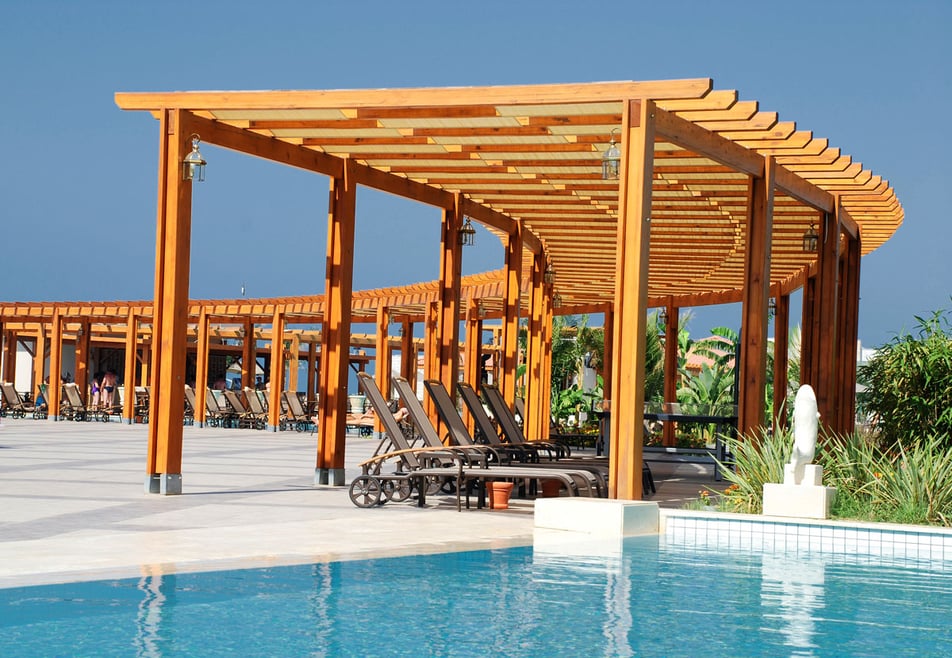
A pergola is a structure made of posts and beams that create a shaded walkway or sheltered area, typically over a patio. They are often used as an extension of a building but their general purpose is to provide a focal point in a garden or outdoor setting.
Not to be confused with gazebos, pergolas have a latticed or slatted roof providing partial shade, while gazebos have a full roof providing complete protection from the sun and rain.
Both structures can be made from a variety of materials, from metal to wood and vinyl, but we have to say that wooden pergolas will add more value to your structure. When you look at the history, you can see that pergolas and gardens have an intertwined unity due to the natural aesthetic. Today, when you add a pergola to your landscape design, you create spaces for people to explore their creativity, relax and spend more time outside.
Conclusion
While hardscape design brings structural and functional benefits to outdoor designs, you can turn these benefits into greater wealth with the choice of materials and craftsmanship you use. Using water, wood and stone, which are three elements from the resources that represent nature, in your landscape design, will make your buildings more in touch with the natural world.
At Karaoglu, we understand the importance of blending hardscape and softscape features and have the expertise and experience to design and implement them into your landscape. To see our previous work, check out our gallery pages, or to read more about landscape design, check out this article.
![karaoglu-web-footer[7].webp](https://blog.karaoglu.com.tr/hubfs/karaoglu-web-footer%5B7%5D.webp.png)
